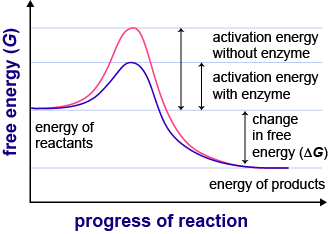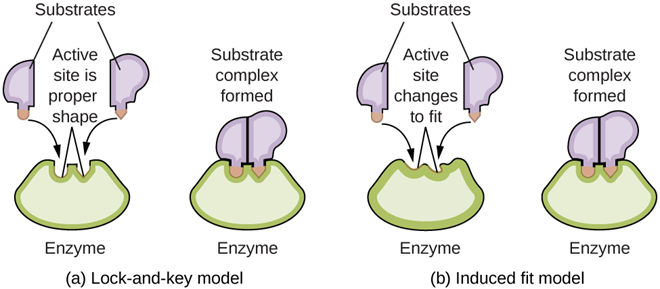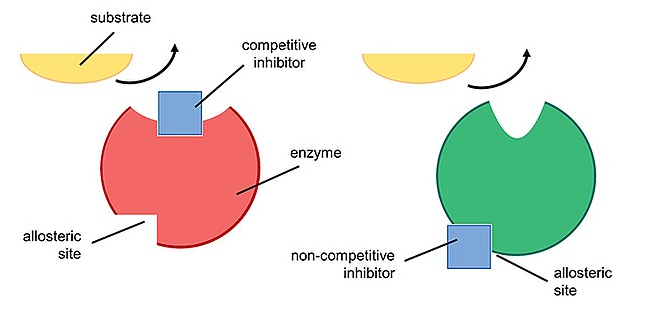Metabolism: Energy and Enzymes
Openstax Biology 2e - Chapter 6
Essential Questions:
What cellular mechanisms allow for the digestion of milk?
Why do some humans have this ability, but some are lactose intolerant?
What is Metabolism
Metabolism in organisms refers to the sum total of all the chemical reactions that occur within a living organism to maintain life. It includes a wide range of processes that involve the conversion of molecules, the synthesis and breakdown of complex molecules, and the transfer of energy. Metabolism can be broadly categorized into two main types: anabolism and catabolism.
-
Anabolism:
- Synthesis of complex molecules from simpler ones.
- Energy is required
- Synthesis of proteins from amino acids
- Formation of complex carbohydrates from simple sugars.
- Catabolism:
- The breakdown of complex molecules into simpler ones.
- Energy is often released.
- Breakdown of glucose in cellular respiration to produce energy
- Digestion of food in the gastrointestinal tract.
Enzymes
-
Catalysis:
- Enzymes act as catalysts, accelerating the rate of biochemical reactions without being consumed in the process.
- They lower the activation energy required for a reaction to occur, making it easier for the reaction to proceed.

- Specificity:
- Enzymes are highly specific, each catalyzing a particular reaction or a set of closely related reactions.
- The specificity is often due to the enzyme's unique three-dimensional shape, which complements the specific structure of its substrate (the molecule it acts upon).
- Substrate Binding:
- Enzymes bind with their specific substrates at the active site, a region on the enzyme's surface.
- The binding of the substrate to the active site induces a conformational change in the enzyme, facilitating the catalytic reaction.
- Lock and Key Model:
- The specificity of enzyme-substrate interaction is often described by the lock and key model, where the enzyme's active site is a specific "lock" and the substrate is the corresponding "key."
- The specificity of enzyme-substrate interaction is often described by the lock and key model, where the enzyme's active site is a specific "lock" and the substrate is the corresponding "key."
- Induced Fit Model:
- The induced fit model suggests that the enzyme's active site undergoes a conformational change upon substrate binding

- The induced fit model suggests that the enzyme's active site undergoes a conformational change upon substrate binding
- pH and Temperature Sensitivity:
- Enzymes function optimally within specific ranges of pH and temperature.
- Changes outside these ranges can denature enzymes, altering their structure and affecting their catalytic activity.
- Regulation:
- Enzyme activity is often regulated to maintain cellular homeostasis.
- Regulation can occur through factors such as allosteric inhibitation, competitive inhibition, and feedback inhibition.

- Coenzymes and Cofactors:
- Enzymes may require additional non-protein molecules, known as coenzymes or cofactors, for proper function.
- Coenzymes and cofactors often assist in enzyme-substrate binding

- Metabolic Pathways:
- Enzymes are involved in metabolic pathways, where a series of interconnected reactions occur to transform substrates into products.
- Each step in a metabolic pathway is catalyzed by a specific enzyme.
